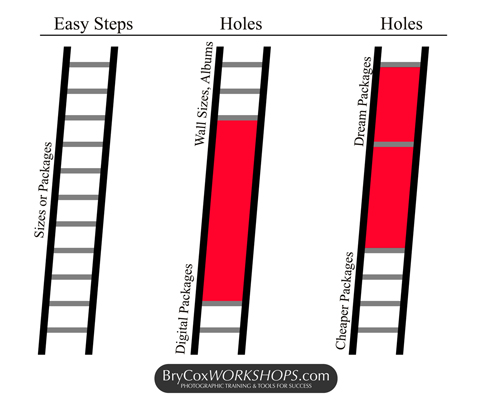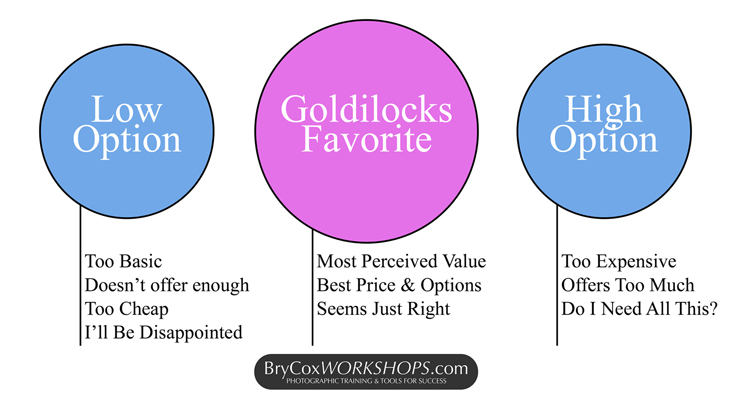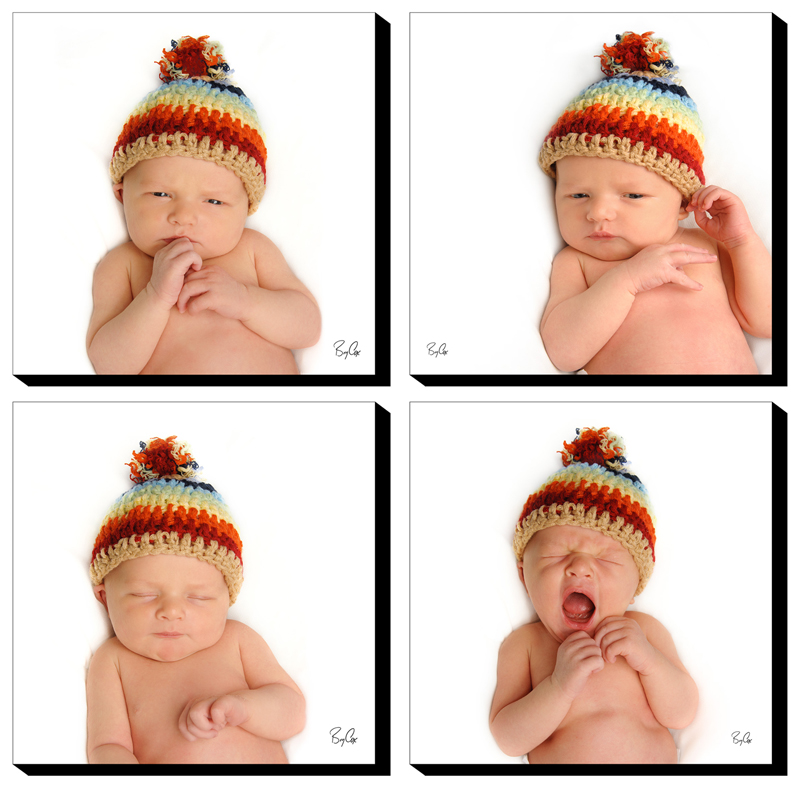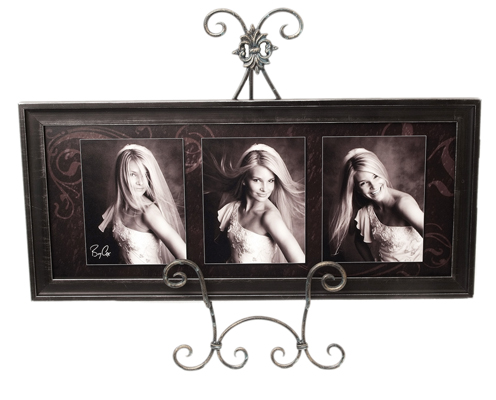by Bry Cox, Texas School Instructor
Awhile back I consulted with a photographer who desperately needed help. She was a single mother trying to make a living as a self-taught photographer shooting “auto” and selling digital files. While attending her first big convention, she heard a speech about a $3,000 sale and she began to sob. Such a thing was so outside her world that it seemed unreachable.

She had tried to sell products and even added them to her price menu, but no one was buying. Aware of my online videos and articles, she contacted me for a personal consultation. In reviewing her practices, I saw that she had major holes in her pricing “ladder steps.” Good sales start with appropriate or rational pricing, and her pricing was totally askew.
Ladder Steps – Imagine a ladder where each rung or step is within easy reach of the last with no large holes. If there were holes, you couldn’t get higher or you’d fall through the ladder (above image).
It’s much like eating out at a restaurant that has entrees for $15, $20, $25, and suddenly there are two items for $75 and $80. Would you order the most expensive dishes? No, because it doesn’t make rational sense. As a result of their crazy gap pricing, this restaurant would sell mostly $15 and $20 meals, and the $25 meal would be the most expensive because people psychologically fall off the ladder at that point.
 Like Goldilocks, Clients Prefer the Middle – A big aspect to the Psychology of Pricing is that people are like Goldilocks, comfortable with the middle price option. The cheapest is seen as too basic and disappointing, the top is perceived to be too expensive and offering more than they need, leaving the middle option as the Goldilocks choice… just right.
Like Goldilocks, Clients Prefer the Middle – A big aspect to the Psychology of Pricing is that people are like Goldilocks, comfortable with the middle price option. The cheapest is seen as too basic and disappointing, the top is perceived to be too expensive and offering more than they need, leaving the middle option as the Goldilocks choice… just right.
As seen in the illustration above, that middle price is perceived as having the most value for the dollar. In this restaurant analogy, the $75 and $80 options don’t even exist to a customer. They scan the menu, climb the ladder, and subconsciously analyze the three lower options, then fall through the ladder’s gaping hole and start over again at the three bottom choices.
The “actual highest” price is effectively $25, so people float down to the middle option at $20. Their subconscious mind says they’re getting everything they want – the night out, the ambiance of the restaurant, the social night with their friends, a good meal, and they don’t look like a cheapskate. The middle option is their friend.

Similarly, our photographer had a couple of cheaper digital packages and some high priced products so her price menu looked like the second ladder. In her low-end digital packages, one option didn’t offer much, but one rung up gave people everything! They got free travel to any location (because she didn’t have a studio), they got all their images digitally delivered, retouched, and full-sized.
From there, her clients would go to the grocery store or online and have cheap canvases, prints, and albums made up. She felt bad because she’d see these in their homes and things looked shoddy. They didn’t represent what she wanted to produce. She wanted to do better. So, she found a lab, came up with some expensive packages …but no one bought them. Why?
The Value of One Image – Aside from her ladder steps being off, she also didn’t understand the value of one image. Her pricing was based on material costs, not value. She saw the cost of digital images being “free” because they were just electrons easily sent over the internet, whereas her products came with an actual lab bill and therefore she priced them higher. Everything was askew.
As a result, her clients would never buy, for instance, three printed photographs. Why would they when they were getting a digital file for less? That file gave them the ability to effectively produce a million copies and never pay her again. She was giving away her value because she saw photography in terms of material costs.
The solution was to put a value on one image… like an 8×10. What’s the true value of that 8×10 vs. the material cost? Then, what’s the value of one digital file in relation to that 8×10 print, knowing that a digital file is really access to multiple prints? What’s the value of an album that contains 20 of your custom images? What’s the value then of a 4-image standout collection on the wall of a cute baby? What about the value of a finished and framed trio complete with 3 custom-made photographs?
Understanding the value of one image helps you properly price these and other products on your menu, regardless of what these products may actually cost you in materials. Pricing is just one small piece of the big picture in running a successful photography business. So, come spend a week with me at Texas School 2018 where we have the time and ability to really delve into these subjects deeper.
Also, we’ll cover even more with each subject being like a puzzle piece that fits together into a more successful business. We’ll photograph models indoors and outside as we cover quality, custom lighting, emotion, understanding social dynamics, psychology of pricing and sales, and valuing your talent.
 Bry Cox is a Gold Medalist out of 25,000 international photographers. He is on the Adobe Software Evangelist team and is a PPA Master/Craftsman about 11 times over. Bry owned a studio in Utah for over 20 years and has been teaching workshops for over a decade. To learn more about Bry Cox, go to
Bry Cox is a Gold Medalist out of 25,000 international photographers. He is on the Adobe Software Evangelist team and is a PPA Master/Craftsman about 11 times over. Bry owned a studio in Utah for over 20 years and has been teaching workshops for over a decade. To learn more about Bry Cox, go to
www.BryCox.com or TexasSchool.org.











